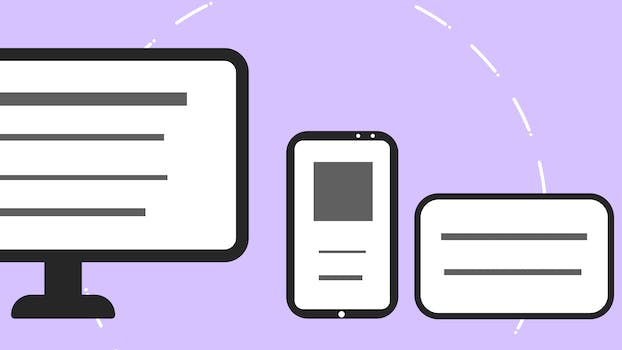How To Start A Business Line Of Credit
“Unlock the financial power of your business with a line of credit.”
Introduction
Starting a business line of credit can be a great way to access funds for your business needs. It can help you manage cash flow, purchase inventory, and cover unexpected expenses. In this article, we will discuss the steps you need to take to start a business line of credit.
Benefits of Having a Business Line of Credit
Starting a business can be a daunting task, especially when it comes to financing. One of the most important things to consider is how to secure funding for your business. One option that many entrepreneurs turn to is a business line of credit. A business line of credit is a flexible financing option that can help you manage your cash flow and grow your business. In this article, we will discuss the benefits of having a business line of credit and how to start one.
One of the biggest benefits of having a business line of credit is the flexibility it provides. Unlike a traditional loan, a business line of credit allows you to borrow money as you need it, up to a predetermined limit. This means that you can access funds when you need them, without having to go through the application process every time. This can be especially helpful for businesses that have fluctuating cash flow or unexpected expenses.
Another benefit of having a business line of credit is that it can help you build your credit score. By making timely payments on your line of credit, you can demonstrate to lenders that you are a responsible borrower. This can make it easier for you to secure financing in the future, whether you need a loan to expand your business or to purchase new equipment.
A business line of credit can also help you manage your cash flow. With a line of credit, you can access funds quickly and easily, which can be especially helpful if you have a large order to fill or need to purchase inventory. This can help you avoid cash flow problems and ensure that you have the resources you need to keep your business running smoothly.
So, how do you start a business line of credit? The first step is to determine your creditworthiness. Lenders will look at your credit score, business history, and financial statements to determine whether you are a good candidate for a line of credit. If you have a strong credit score and a solid business history, you may be able to secure a line of credit with favorable terms.
Once you have determined your creditworthiness, you will need to find a lender that offers business lines of credit. You can start by checking with your bank or credit union, or by doing a search online. Be sure to compare rates and terms from multiple lenders to find the best option for your business.
When you apply for a business line of credit, you will need to provide documentation such as financial statements, tax returns, and business plans. Lenders will use this information to determine your creditworthiness and to set the terms of your line of credit. Be sure to provide accurate and complete information to increase your chances of approval.
Once you have been approved for a business line of credit, it is important to use it responsibly. Only borrow what you need, and make timely payments to avoid penalties and fees. By using your line of credit wisely, you can build your credit score and ensure that you have the resources you need to grow your business.
In conclusion, a business line of credit can be a valuable tool for entrepreneurs who need flexible financing options. By providing access to funds when you need them, a line of credit can help you manage your cash flow and grow your business. To start a business line of credit, determine your creditworthiness, find a lender, and provide accurate documentation. Use your line of credit responsibly to build your credit score and ensure the success of your business.
Steps to Qualify for a Business Line of Credit

Starting a business line of credit can be a great way to access funds for your business when you need them. However, qualifying for a business line of credit can be a bit tricky. In this article, we will discuss the steps you need to take to qualify for a business line of credit.
Step 1: Establish Your Business Credit
The first step to qualifying for a business line of credit is to establish your business credit. This means that you need to have a separate credit profile for your business. You can do this by incorporating your business and obtaining a tax ID number. Once you have done this, you can start building your business credit by opening a business credit card and making timely payments.
Step 2: Build a Strong Financial Profile
In addition to establishing your business credit, you also need to build a strong financial profile. This means that you need to have a good credit score, a solid financial history, and a healthy cash flow. Lenders will look at your financial profile to determine whether you are a good candidate for a business line of credit.
Step 3: Choose the Right Lender
Once you have established your business credit and built a strong financial profile, you need to choose the right lender. There are many lenders that offer business lines of credit, but not all of them are created equal. You should look for a lender that specializes in business lending and has experience working with businesses like yours.
Step 4: Gather Your Financial Documents
Before you apply for a business line of credit, you need to gather your financial documents. This includes your business tax returns, bank statements, and financial statements. Lenders will use these documents to evaluate your financial health and determine whether you are a good candidate for a business line of credit.
Step 5: Apply for a Business Line of Credit
Once you have established your business credit, built a strong financial profile, chosen the right lender, and gathered your financial documents, you are ready to apply for a business line of credit. You can do this online or in person, depending on the lender. Be prepared to answer questions about your business and provide additional documentation if needed.
Step 6: Use Your Business Line of Credit Wisely
If you are approved for a business line of credit, it is important to use it wisely. A business line of credit is not free money – it is a loan that you will need to pay back with interest. Use your business line of credit to fund necessary expenses, such as inventory or equipment, and make timely payments to avoid damaging your credit score.
In conclusion, starting a business line of credit can be a great way to access funds for your business when you need them. However, qualifying for a business line of credit requires you to establish your business credit, build a strong financial profile, choose the right lender, gather your financial documents, and apply for a business line of credit. By following these steps and using your business line of credit wisely, you can help your business grow and thrive.
How to Choose the Right Business Line of Credit for Your Needs
Starting a business can be an exciting and rewarding experience, but it can also be a challenging one. One of the biggest challenges that new business owners face is securing financing to get their business off the ground. One option that many business owners consider is a business line of credit. A business line of credit can provide a flexible source of financing that can be used to cover a variety of expenses, from inventory to payroll. In this article, we’ll discuss how to choose the right business line of credit for your needs.
The first step in choosing a business line of credit is to determine your financing needs. How much money do you need to borrow? What will you be using the funds for? How quickly do you need the funds? These are all important questions to consider when choosing a business line of credit.
Once you have a clear understanding of your financing needs, you can begin to research different types of business lines of credit. There are several different types of business lines of credit available, each with its own set of benefits and drawbacks.
One type of business line of credit is a traditional bank line of credit. These lines of credit are typically offered by banks and require a strong credit history and financial statements to qualify. While traditional bank lines of credit can offer competitive interest rates and flexible repayment terms, they can be difficult to qualify for and may require a significant amount of collateral.
Another type of business line of credit is a business credit card. Business credit cards can be a convenient way to access financing for smaller expenses, but they often come with higher interest rates and lower credit limits than traditional bank lines of credit.
A third type of business line of credit is a merchant cash advance. Merchant cash advances are a type of financing that is based on your business’s future credit card sales. While merchant cash advances can be a quick and easy way to access financing, they often come with high interest rates and fees.
Once you have a clear understanding of the different types of business lines of credit available, you can begin to compare the different options and choose the one that best meets your needs. When comparing business lines of credit, be sure to consider factors such as interest rates, repayment terms, and fees.
It’s also important to consider the reputation of the lender when choosing a business line of credit. Look for lenders that have a strong track record of working with small businesses and that offer transparent and fair lending practices.
Once you have chosen a business line of credit, it’s important to use it responsibly. Be sure to only borrow what you need and to make timely payments to avoid damaging your credit score.
In conclusion, choosing the right business line of credit can be a critical step in starting and growing your business. By understanding your financing needs and researching the different types of business lines of credit available, you can choose the option that best meets your needs and helps you achieve your business goals. Remember to use your business line of credit responsibly and to work with reputable lenders to ensure a successful and sustainable business.
Tips for Managing Your Business Line of Credit Effectively
Starting a business line of credit can be a great way to manage your company’s finances and ensure that you have access to the funds you need when you need them. However, it’s important to approach this process carefully and thoughtfully to ensure that you’re making the most of your credit line and avoiding any potential pitfalls.
The first step in starting a business line of credit is to research your options and find a lender that offers the terms and conditions that are right for your business. Look for a lender that has experience working with businesses like yours and that offers competitive interest rates and fees.
Once you’ve found a lender that you’re comfortable working with, you’ll need to apply for a line of credit. This will typically involve providing detailed information about your business, including your financial history, your revenue and expenses, and your plans for using the credit line.
When you’re approved for a business line of credit, it’s important to use it responsibly and manage it effectively. Here are some tips for doing just that:
1. Set a budget: Before you start using your credit line, take the time to create a budget that outlines your expected expenses and revenue. This will help you avoid overspending and ensure that you’re using your credit line strategically.
2. Monitor your spending: Keep a close eye on your spending and make sure that you’re staying within your budget. Use accounting software or other tools to track your expenses and revenue, and adjust your budget as needed.
3. Pay on time: Make sure that you’re making your payments on time and in full. Late payments can damage your credit score and make it harder to access credit in the future.
4. Use your credit line strategically: Use your credit line to finance strategic investments in your business, such as new equipment or marketing campaigns. Avoid using it for day-to-day expenses or non-essential purchases.
5. Build a relationship with your lender: Stay in touch with your lender and keep them updated on your business’s progress. This can help you build a strong relationship with them and make it easier to access credit in the future.
Starting a business line of credit can be a smart move for your business, but it’s important to approach it carefully and manage it effectively. By setting a budget, monitoring your spending, paying on time, using your credit line strategically, and building a relationship with your lender, you can make the most of your credit line and ensure that your business has the funds it needs to succeed.
Common Mistakes to Avoid When Using a Business Line of Credit
Starting a business line of credit can be a great way to access funds for your business when you need them. However, it’s important to be aware of common mistakes that can be made when using a business line of credit. In this article, we’ll discuss some of these mistakes and how to avoid them.
The first mistake to avoid is not having a clear plan for how you will use the funds. It’s important to have a specific purpose for the funds you are borrowing, whether it’s to purchase inventory, invest in equipment, or cover unexpected expenses. Without a clear plan, it can be easy to overspend and end up with more debt than you can handle.
Another mistake to avoid is not understanding the terms and conditions of your business line of credit. Make sure you read the fine print and understand the interest rates, fees, and repayment terms. It’s also important to know what happens if you miss a payment or exceed your credit limit. Being aware of these details can help you avoid costly mistakes down the line.
A third mistake to avoid is relying too heavily on your business line of credit. While it can be a useful tool, it’s important to remember that it’s still debt that needs to be repaid. If you find yourself constantly borrowing from your line of credit to cover expenses, it may be a sign that your business is not generating enough revenue to sustain itself. In this case, it may be necessary to reevaluate your business model and make changes to increase profitability.
Another common mistake is not keeping track of your spending. It’s important to monitor your business line of credit usage and make sure you are staying within your budget. This can help you avoid overspending and accumulating more debt than you can handle. It’s also a good idea to regularly review your financial statements and make adjustments as needed.
Finally, it’s important to avoid using your business line of credit for personal expenses. This can not only lead to financial problems for your business, but it can also create legal issues if you are audited by the IRS. Keep your business and personal finances separate to avoid any potential problems.
In conclusion, starting a business line of credit can be a great way to access funds for your business. However, it’s important to be aware of common mistakes that can be made when using a business line of credit. By having a clear plan for how you will use the funds, understanding the terms and conditions, not relying too heavily on your line of credit, keeping track of your spending, and avoiding using it for personal expenses, you can use your business line of credit responsibly and avoid costly mistakes.
Conclusion
To start a business line of credit, you should first establish a strong credit history and financial standing for your business. Then, research and compare different lenders and their terms and requirements. Finally, apply for the line of credit and use it responsibly to build your business’s credit and financial stability.






